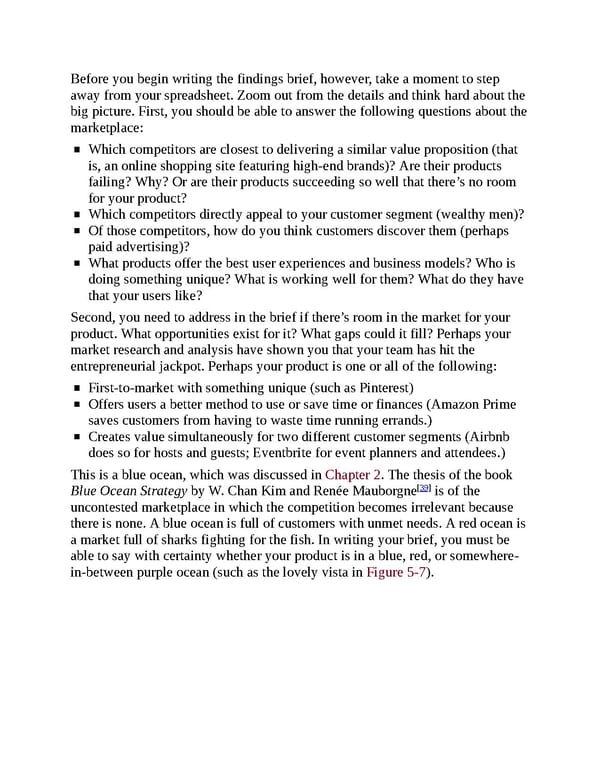Before you begin writing the findings brief, however, take a moment to step away from your spreadsheet. Zoom out from the details and think hard about the big picture. First, you should be able to answer the following questions about the marketplace: Which competitors are closest to delivering a similar value proposition (that is, an online shopping site featuring high-end brands)? Are their products failing? Why? Or are their products succeeding so well that there’s no room for your product? Which competitors directly appeal to your customer segment (wealthy men)? Of those competitors, how do you think customers discover them (perhaps paid advertising)? What products offer the best user experiences and business models? Who is doing something unique? What is working well for them? What do they have that your users like? Second, you need to address in the brief if there’s room in the market for your product. What opportunities exist for it? What gaps could it fill? Perhaps your market research and analysis have shown you that your team has hit the entrepreneurial jackpot. Perhaps your product is one or all of the following: First-to-market with something unique (such as Pinterest) Offers users a better method to use or save time or finances (Amazon Prime saves customers from having to waste time running errands.) Creates value simultaneously for two different customer segments (Airbnb does so for hosts and guests; Eventbrite for event planners and attendees.) This is a blue ocean, which was discussed in Chapter 2. The thesis of the book [39] Blue Ocean Strategy by W. Chan Kim and Renée Mauborgne is of the uncontested marketplace in which the competition becomes irrelevant because there is none. A blue ocean is full of customers with unmet needs. A red ocean is a market full of sharks fighting for the fish. In writing your brief, you must be able to say with certainty whether your product is in a blue, red, or somewhere- in-between purple ocean (such as the lovely vista in Figure 5-7).
 UX Strategy: How to Devise Innovative Digital Products that People Want Page 120 Page 122
UX Strategy: How to Devise Innovative Digital Products that People Want Page 120 Page 122